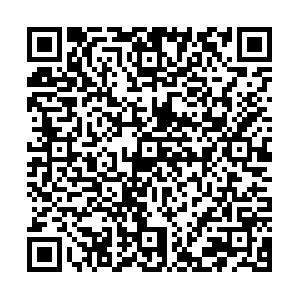Effect and Psychological State of Triangle Hierarchical Management+LEARNS Model for Diabetes Nephropathy
-
摘要:
目的 探究在对糖尿病肾病患者护理时开展Triangle分层分级管理+LEARNS模式对患者血糖水平、肾功能水平以及心理状态等改善作用。 方法 在2022年2月至2023年1月云南省第三人民医院收治糖尿病肾病患者中随机抽选74例为对象,Excel表随机排序划分对照组(n=37,治疗期间接受常规护理)和观察组(n=37,接受Triangle分层分级管理+LEARNS模式护理)。针对患者血压水平、肾功能水平等改善情况进行评估。 结果 对比2组干预前后血糖水平,餐后2 h血糖、空腹血糖,干预后观察组低于对照组,差异有统计学意义(P < 0.05)。对比患者生存质量,干预前无差异,干预后观察组QOLIE-31量表评分高于对照组,差异有统计学意义(P < 0.05)。对比患者负面情绪评分,干预前BAI以及BDI评分无差异,干预后观察组评分低于对照组,差异有统计学意义(P < 0.05)。对比患者肾功能水平,干预后观察组肾功能水平高于对照组,差异有统计学意义(P < 0.05)。对比2组自我管理能力,干预后观察组高于对照组,差异有统计学意义(P < 0.05)。 结论 在对糖尿病肾病患者护理时开展Triangle分层分级管理+LEARNS模式,可改善患者血糖、肾功能水平,缓解患者治疗期间负面情绪,有助于患者进行恢复。 -
关键词:
- 糖尿病肾病 /
- Triangle分层分级管理 /
- LEARNS模式 /
- 心理状态
Abstract:Objective To explore the improvement effect of Triangle hierarchical management+LEARNS model on blood sugar level, renal function level and psychological status of patients with diabetes nephropathy in nursing care. Methods A total of 74 diabetic nephropathy patients admitted to the Third People's Hospital of Yunnan Province from February 2022 to January 2023 were randomly selected as study subjects. The control group (n=37, receiving routine care during treatment) and the observation group (n=37, receiving Triangle hierarchical management+LEARNS care) were randomly sorted by Excel table. The improvement of blood pressure and renal function were evaluated. Results Comparing the blood sugar levels before and after the intervention in 2 groups, the postprandial 2-hour blood sugar and fasting blood sugar were lower in the observation group than in the control group after the intervention, with statistically significant differences (P < 0.05). Comparing the quality of life of patients, there was no difference before the intervention, but after the intervention, the observation group had higher scores on the QOLIE-31 scale compared to the control group, with statistically significant differences (P < 0.05). Comparing the negative emotional scores of patients, there was no difference in BAI and BDI scores before the intervention, but after the intervention, the observation group had lower scores than the control group, with statistically significant differences (P < 0.05). Comparing the kidney function levels of patients, the observation group had higher kidney function levels than the control group after the intervention, with statistically significant differences (P < 0.05). Comparing the self-management abilities of the 2 groups, the observation group was higher than the control group after the intervention, with statistically significant differences (P < 0.05). Conclusion The implementation of Triangle hierarchical management +LEARNS model in the nursing of patients with diabetic nephropathy can improve the blood glucose and renal function of patients, relieve the negative emotions of patients during treatment, and help patients recover. -
表 1 2组一般资料比较[$ \bar x \pm s $/n(%)]
Table 1. Comparison of General Information between the two groups [$ \bar x \pm s $/n(%)]
组别 n 性别 年龄(岁) 病程(a) 体重指数(kg/m2) 尿蛋白水平(g/24 h) 男性 女性 观察组 37 19(51.35) 18(48.65) 63.45±1.78 5.11±1.05 20.15±1.11 3.86±0.15 对照组 37 20(54.05) 17(45.95) 63.96±1.86 5.15±1.12 20.08±1.58 3.91±0.24 t/χ2 0.054 1.215 0.159 0.221 1.075 P 0.816 0.228 0.874 0.826 0.286 表 2 2组血糖水平对比($\bar x \pm s $)
Table 2. Comparison of blood glucose levels between the two groups ($\bar x \pm s $)
组别 n 空腹血糖水平(mmol/L) 餐后2 h血糖水平(mmol/L) 干预前 干预后 干预前 干预后 观察组 37 11.63±0.51 8.11±0.22 13.05±1.35 9.11±1.05 对照组 37 11.71±0.42 9.91±0.19 13.11±1.28 10.52±1.12 t 0.737 37.666 0.196 5.587 P 0.464 <0.001*△ 0.845 <0.001*△ 与干预前比较,*P < 0.05;与对照组比较,△P < 0.05。 表 3 2组生存质量对比[($\bar x \pm s $),分]
Table 3. Comparison of Quality of Life between the two groups [($ \bar x \pm s $),score]
组别 n 干预前 干预后 观察组 37 65.45±3.45 88.96±1.63 对照组 37 66.04±2.76 82.06±1.34 t 0.812 19.891 P 0.419 <0.001*△ 与干预前比较,*P < 0.05;与对照组比较,△P < 0.05。 表 4 2组患者BAI评分以及BDI评分对比[($\bar x \pm s $),分]
Table 4. Comparison of BAI and BDI scores between two groups of patients [($ \bar x \pm s $),score]
组别 n BAI评分 BDI评分 干预前 干预后 干预前 干预后 观察组 37 17.56±1.05 5.12±0.15 13.05±1.35 6.25±1.15 对照组 37 17.15±1.15 8.63±0.25 13.22±1.28 8.86±1.12 t − 1.602 73.232 0.556 9.890 P − 0.114 <0.001*△ 0.580 <0.001*△ 与干预前比较,*P < 0.05;与对照组比较,△P < 0.05。 表 5 2组干预前后肾功能水平对比($ \bar x \pm s $)
Table 5. Comparison of renal function levels before and after intervention between two groups ($\bar x \pm s $)
组别 n 尿蛋白排泄率(μg/min) 尿素氮(μmol/L) 血肌酐(μmol/L) 干预前 干预后 干预前 干预后 干预前 干预后
(Ⅲ期患者)干预后
(Ⅳ期患者)干预后
(Ⅴ期患者)观察组 37 156.85±8.25 68.25±4.12 425.65±21.45 342.25±24.35 215.85±31.12 253.25±25.45 308.45±14.25 325.45±14.05 对照组 37 157.45±9.07 98.35±4.81 426.45±22.05 408.05±18.45 218.54±28.45 286.24±19.45 328.45±14.22 336.45±12.05 t - 0.298 28.909 0.158 13.101 0.388 6.265 6.043 3.615 P - 0.767 <0.001*△ 0.875 <0.001*△ 0.699 <0.001*△ <0.001*△ <0.001*△ 与干预前比较,*P < 0.05;与对照组比较,△P < 0.05。 表 6 2组自我管理能力分析[($\bar x \pm s $),分]
Table 6. Analysis of self-management abilities in two groups [($ \bar x \pm s $),score]
组别 n 血糖监测 运动 饮食 干预前 干预后 干预前 干预后 干预前 干预后 观察组 37 83.75±2.25 94.15±2.35 81.45±1.93 95.45±1.15 80.14±2.35 93.25±1.35*△ 对照组 37 84.25±2.31 87.05±2.12 81.08±1.86 88.05±1.34 81.15±2.23 86.55±1.86* t − 0.943 13.646 0.839 25.491 1.896 17.733 P − 0.348 <0.001*△ 0.404 <0.001*△ 0.062 <0.001* 与干预前比较,*P < 0.05;与对照组比较,△P < 0.05。 -
[1] 薛耀明. 重视糖尿病肾脏病患者的心血管风险评估与管理[J]. 中华糖尿病杂志,2020,12(10):42-45. [2] 戴梦飞,李舒悦,王宝彦,等. 基于Triangle理论的华法林抗凝患者分级管理模式的建立与实践[J]. 中国药学杂志,2022,57(21):52-54. [3] 宋丽妮,刘敬怡,张怡尘,等. 糖尿病肾病早期诊断标志物的研究新进展[J]. 首都医科大学学报,2017,38(2):61-63. [4] 杨小玲,袁丽,古艳. 糖尿病Triangle分层分级管理流程的构建[J]. 中华糖尿病杂志,2018,10(5):71-73. [5] Issar T,Arnold R,Kwai N C G,et al. Relative contributions of diabetes and chronic kidney disease to neuropathy development in diabetic nephropathy patients[J]. Clinical Neurophysiology,2019,130(11):2088-2095. doi: 10.1016/j.clinph.2019.08.005 [6] 周晨. 基于马斯洛需求理论的护理对糖尿病肾病病人肠道微生态、代谢指标和心理状态的影响[J]. 广州医科大学学报,2022,50(01):126-129. [7] Steinke J M,Sinaiko A R,Kramer M S,et al. The early natural history of nephropathy in Type 1 Diabetes: III. Predictors of 5-year urinary albumin excretion rate patterns in initially normoalbuminuric patients.[J]. Diabetes,2005,54(7):2164-2171. doi: 10.2337/diabetes.54.7.2164 [8] 尤晓婷,刘俊芬. 综合护理在CRRT治疗糖尿病肾病急性肾衰竭患者中的作用——《实用重症监护技术》[J]. 中国实验方剂学杂志,2022,28(22):18-23. [9] 爱红,肇炜博. 积极筛查,全面评估,分级诊治糖尿病足——糖尿病足的筛查要点和诊疗策略探讨[J]. 中国全科医学,2021,24(24):63-65. [10] 覃照菊,覃爱芳,韦美爱,等. 基于互联网平台的血糖分级护理模式在糖尿病患者血糖管理中的应用[J]. 重庆医学,2022,51(S02):399-401. [11] 黄素俭,黄小娟,陈碧玲,等. 问题导引-目标链接式护理干预在糖尿病肾病血液透析者低血糖预防中的应用效果[J]. 护理实践与研究,2021,18(16):2434-2436. [12] 张丽,刘文文. 护患沟通在老年糖尿病护理过程中的作用效果及对改善患者病情的影响[J]. 沈阳药科大学学报,2021,38(S01):28-31. [13] 申东雯,刘俊杰,赵微,等. LEARNS模式健康教育对2型糖尿病患者的干预效果分析[J]. 中国健康教育,2022,38(9):845-848. [14] SarrajuA,Li J W,Cannon C P,et al. Effects of canagliflozin on cardiovascular,renal,and safety outcomes in participants with type 2 diabetes and chronic kidney disease according to history of heart failure: Results from the CREDENCE trial[J]. American Heart Journal,2021,233(45):141-148. [15] 范良月,陆丽娜,刘梦莹. 糖尿病肾病维持性血液透析老年患者行三位一体延续性护理对白蛋白和前白蛋白的效果分析[J]. 糖尿病新世界,2021,24(8):5-9. -





 下载:
下载: 
